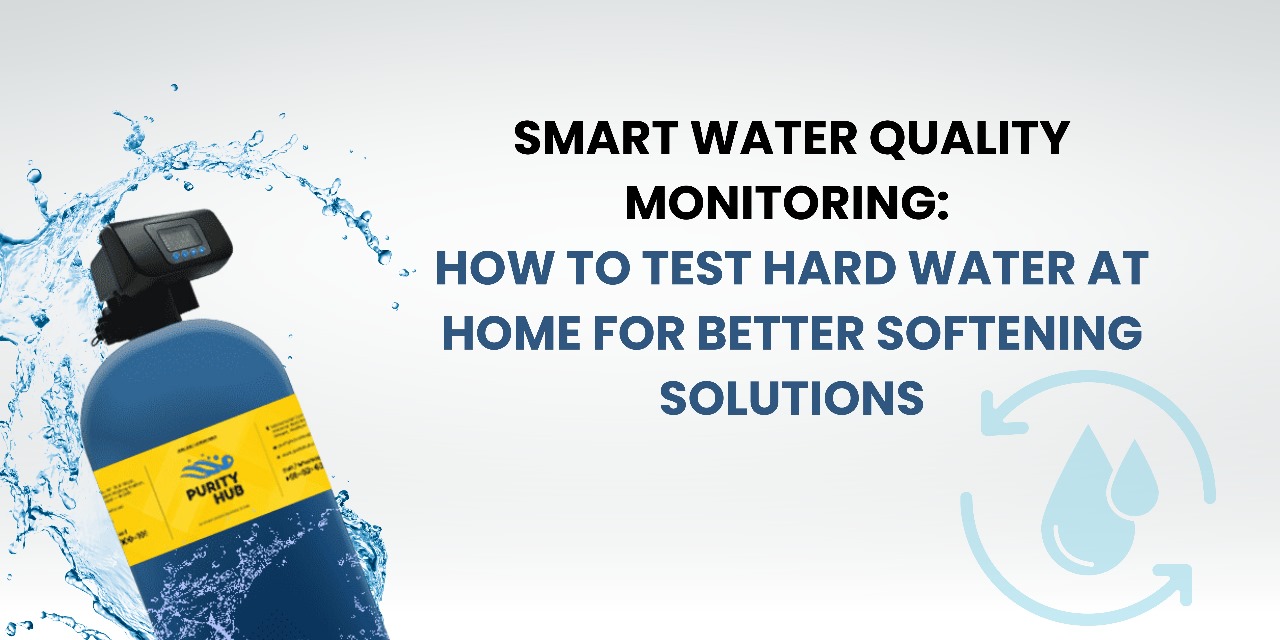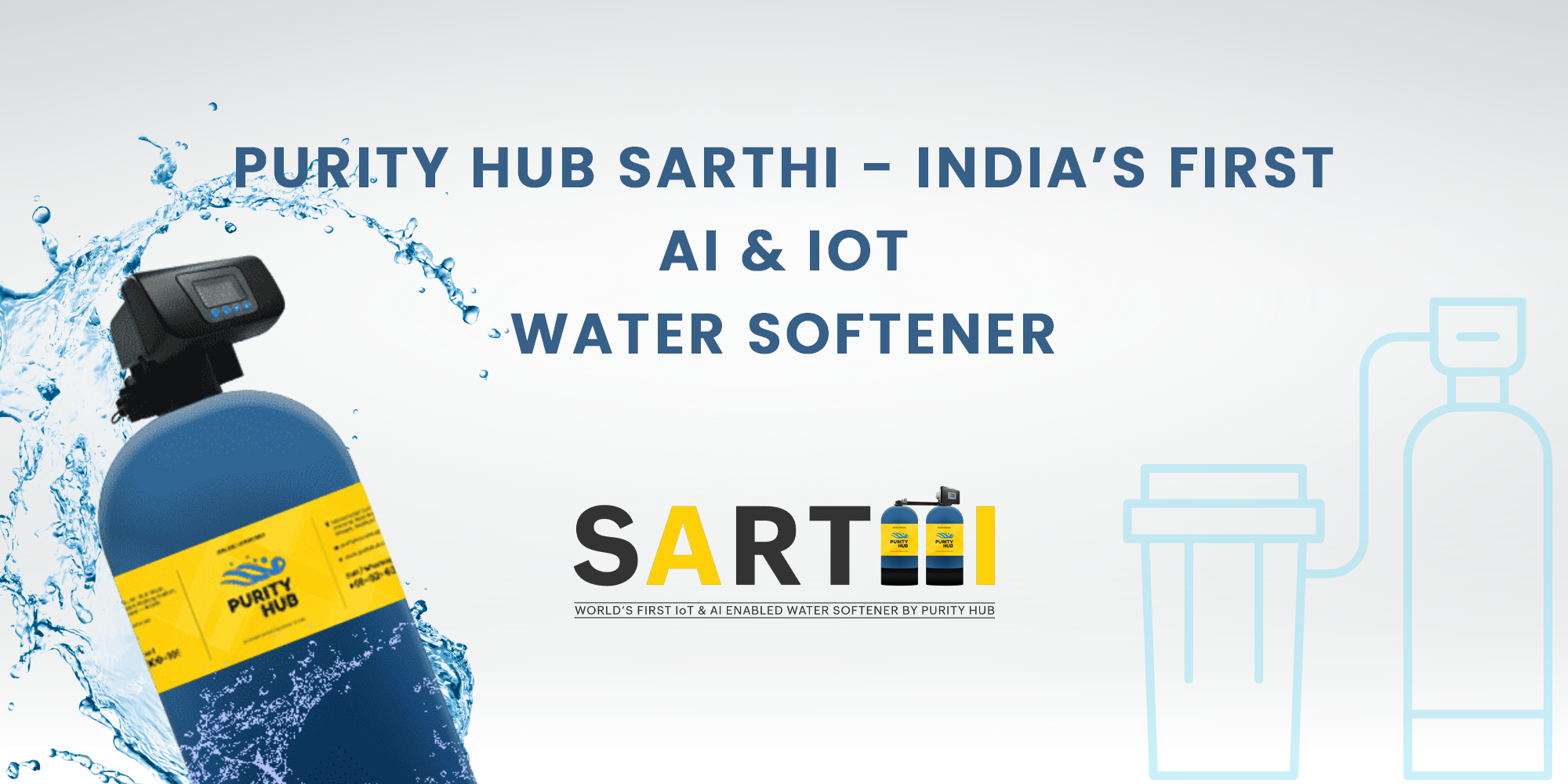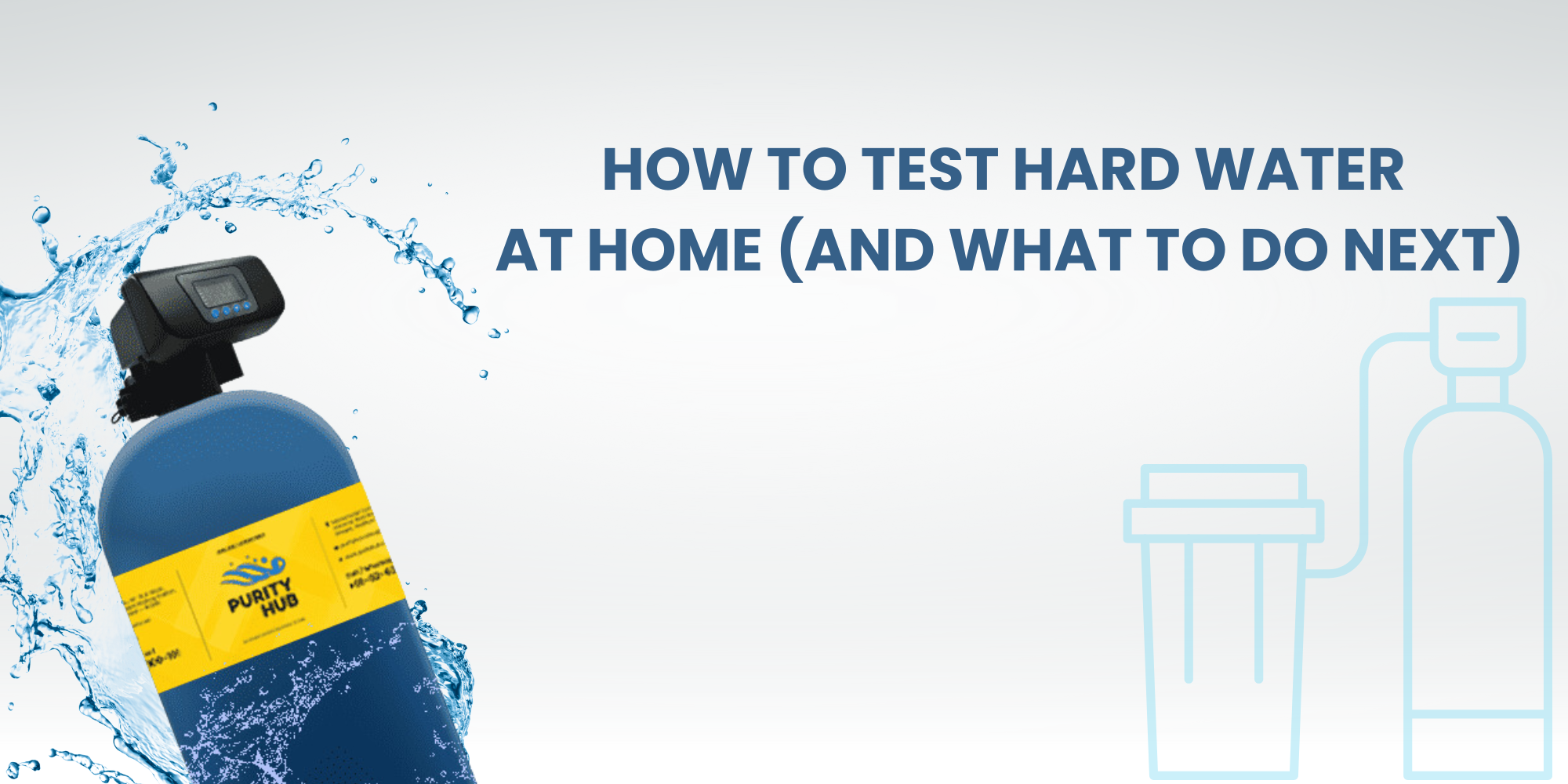
Summary
Testing your water is the first step to understanding if you need hard water treatment at home. Simple methods like the soap test, test strips, or digital kits make it easy to learn how to test hard water at home without any special tools. Interpreting the results helps determine the severity of water hardness and whether a water softener for home is necessary. Knowing your water’s condition allows you to choose the right water softener system for home, saving money and protecting appliances. Regular testing ensures long-term efficiency and helps maintain water quality. With Purity Hub’s smart solutions, monitoring and softening water is both easy and eco-friendly.
INTRODUCTION
You know that mysterious white chalky stuff clinging to your faucets or the reason your shampoo doesn’t seem to lather quite right? Yep, that’s probably hard water doing its not-so-magical thing. But how hard is your water, really? Is it mildly mischievous or full-on mineral mayhem? That’s where water quality monitoring comes in. Understanding your water’s condition is the first step to choosing the perfect water softener for home use.
Let’s dive into the how, the why, and the oh-so-simple steps of how to test hard water at home — no science degree required!
What is Hard Water, Anyway?
Before we test it, let’s talk about what we’re actually testing for. Hard water is water that contains a high concentration of dissolved minerals — mainly calcium and magnesium. While these minerals aren’t harmful to drink, they can cause all sorts of trouble around the house. Think clogged pipes, dull laundry, dry skin, and cranky appliances.
Knowing how hard your water is helps you make smarter choices about hard water treatment, and it can lead to a more efficient home. It’s like checking the tire pressure in your car — a little info goes a long way in preventing problems down the road.
The DIY Approach: How to Test Hard Water at Home (Yes, You Can!)
So, let’s get hands-on. There are several easy ways to test your water’s hardness, and spoiler alert — you don’t need a lab coat.
1. The Soap Test
This one’s a classic. Grab a clean, empty water bottle. Fill it about a third of the way with tap water, then add a few drops of liquid soap (not detergent). Shake it like you’re mixing a fancy cocktail. If you get lots of bubbles and the water stays clear, your water is likely soft. If the water turns cloudy and you see very few bubbles, you’ve got hard water.
2. Water Hardness Test Strips
Available at most hardware stores or online, these are your go-to if you want numbers. Simply dip the strip into your water and wait a few seconds. The strip will change color based on the hardness level. Use the included chart to interpret the results. This gives you a solid understanding of whether you need a house water softener and how powerful it should be.
3. Digital Test Kits
If you love gadgets (don’t we all?), digital testing kits are the most accurate and high-tech option. They usually measure in parts per million (ppm) or grains per gallon (gpg). A reading over 60 ppm or 4 gpg generally means you’re dealing with hard water — and probably need a water softener for hard water.
Understanding the Results: What’s Considered Hard?
Now that you’ve tested, what do the numbers actually mean? Here’s a quick cheat sheet:
Soft Water: 0–60 ppm or 0–3.5 gpg
Moderately Hard: 61–120 ppm or 3.5–7 gpg
Hard: 121–180 ppm or 7–10.5 gpg
Very Hard: 180+ ppm or over 10.5 gpg
The harder the water, the more likely it is to cause buildup and wear down your appliances. That’s why knowing how to test hard water is such an important first step in water softening.
What’s Next? Choosing the Right Softening Solution
Once you know your water’s hardness, you can match it with the right water softener for home use. For mildly hard water, a smaller capacity house water softener might do the trick. If you’re dealing with very hard water, you’ll want a more robust solution — maybe even a water softener for hard water with automatic regeneration features.
Purity Hub offers a wide range of softener systems tailored for Indian water conditions, from compact models to whole-home setups that protect every tap in your house. They even have smart models that adjust automatically based on your water usage — because who doesn’t love a system that thinks for itself?
Why Testing is Just the Beginning
Testing your water isn’t a one-and-done task. It's a smart habit that helps you monitor changes in your water quality over time. Groundwater conditions can shift, municipalities can change their treatment processes, and even seasonal variations can impact your water hardness. Staying on top of it helps you maintain peak efficiency from your water softener system and avoid surprises later.
Plus, if you’ve recently installed a water softener for home, doing a follow-up test can confirm that it’s working properly and delivering that silky-smooth water you’ve been dreaming of.
Conclusion : Water Wisdom Starts at Home
Testing your water might seem like a small thing, but it has big impacts. From saving on energy bills and reducing appliance wear to improving your skin, hair, and laundry results, understanding your water quality empowers you to make smarter decisions. It’s also the first step toward finding the best water softener for home needs — one that fits your lifestyle, your budget, and your water.
So the next time you wonder why your glassware is cloudy or your skin feels dry after a shower, take a few minutes to test your water. It might just be the simplest home upgrade you ever make.



